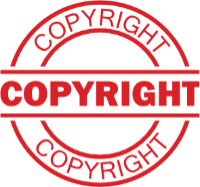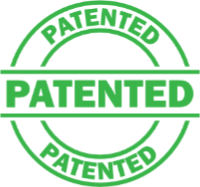Intellectual property comprises of intangible creations which are a product of human intellect. Artistic works such as music and writings; scientific or nonscientific discoveries and inventions; developed words, symbols, and phrases – all these creations fall under the category of intellectual property.
Intellectual property laws exist to encourage the continued creation of a diverse range of intellectual goods by offering protection from theft and unwarranted use. Intellectual property owners are afforded protection by law for goods and information they create for a set period of time.
Intellectual property laws typically offer protection and rights for the owners based on the federal trademark, patent and copyright laws.
Many intellectual goods owners and businesses are unable to determine whether their intellectual property needs to be copyrighted, patented or trademarked for lawful protection.
In order to understand these terms, it is essential to go over the description of these distinctly different rights. Although there are certain similarities between copyrights, trademarks, and patents, they serve completely different purposes.
Table of Contents
What is a copyright?

Copyrights were created to protect ownership of artistic works, including artsy, literary, musical and theatrical creations. Intellectual goods protected by copyrights include poetry, music, songs, motion pictures, novels, architecture, paintings and even computer software and digital creations.
Ideas cannot be copyrighted, however, a tangible form of the idea can be. In artistic works, copyright generally lasts for the duration of the author’s life in addition to 70 years following their death.
By copyrighting creative intellectual property, artists are afforded a public notice and legal evidence of ownership. Infringement of copyright gives the rights to the true owner of the intellectual property to sue the suspect in court.
The exclusive rights offered to copyrighted property includes rights to reproduce or copy the works, rights to distribute or broadcast the works to the public, and the rights to lend or rent the work. The owner of the copyright determines whether anyone can use their work in any capacity.
Copyright is represented by the © symbol, or the word “Copyright” itself. In other cases, it can also be communicated by the abbreviation “Copr.”, and/or the copyrighted work’s year of first publication, and/or the name, designation or credentials of the copyright owner.
Copyright protection is granted automatically to artistic works from the moment they are set in material or tangible form. There is no legal registration process required for establishment of copyright.
However, it is still advised that authors maintain a set of records and evidence of their intellectual property. This evidence is used to show in court during infringement claims to prove that the work was in your possession at any given time.
Copyright protection depends on national legislation and thereby differs in each country. At the time of the copyright owner’s death, the copyright can be left to whomever they wish.
What is a patent?

Patents are intellectual property rights granted to inventions. Materials which are patentable include industrial processes, machines, chemical compositions, and manufactured commodities and artifacts.
Patents belong to the inventor, or otherwise, to the individual or organization, he gives the rights to. Patent owners may license it, enabling others to make use of their invention, or they may sell it.
Patentable inventions are required to meet certain conditions. They must be uniquely new and not published by anyone else previously. Therefore, if you want to register a pattern you must not publicize your invention beforehand.
Furthermore, in order to be patentable, the invention must be usable by any kind of industry. Therefore, the invention must be a product, an apparatus or a manufacturing process, rather than a scientific theory, a work of art, or a mathematical design.
Patents can be categorized as design patents, and utility and plant patents. Design patents protection lasts 15 years starting from application issuance. Conversely, utility and plant patents last maximum 20 years following a filing of the patent application. There is a possibility of extending or adjusting patent terms.
A patent protects an invention from others who may use it without permission of the inventor. This includes rights to prevent the use, sale, offer for sale, and import of said invention. The patentee (owner of the patent) has the right to take legal action against those using the invention without his permission.
To obtain a patent, aspirants must apply to the intellectual property office, which decides whether the invention is patentable or not. However, inventors do not need a patent to make use of their own invention, provided that no one else has acquired patent rights to it.
It is advised to secure a patent as otherwise, it is nearly impossible to prevent others from copying or making use of your invention.
What is a trademark?

A trademark can be defined as a word, symbol, design, and/or phrase which is used to identify and differentiate the source of goods from other similar parties. A somewhat similar right is the service mark, which affords the same protection rights to services rather than goods.
Businesses make use of certain names, symbols, words, and designs when trading goods or services to distinguish themselves as the source of certain goods, products and services. The term “trademark” is frequently used to refer to service marks as well as trademarks.
Some examples of intellectual property requiring a trademark are brand names, brand logos, and their slogans. These examples can all be categorized under the term “mark”.
When using your mark, you can use a designation with it to represent the trademark. This designation is the ™ symbol after the mark if the trademark is registered. If not, owners may use the abbreviations TM for goods and SM for services.
Trademark rights are acquired in order to protect your intellectual property from use by other parties, such as using a confusingly similar phrase, name or symbol. However, these rights do not prevent others from creating and selling the same services and goods under a different name, symbol etc.
All trademarks needn’t be registered – owners can establish “common law” rights on their mark on the basis of use solely in commerce, in which case registration is not necessary. Nevertheless, federal registration of a trademark offers further useful benefits and is therefore recommended.
In the event of foreign or interstate commerce, trademarks may be registered with the patent and trademark office.
Trademarks are not subject to expire after a set period of time. Trademarks can last indefinitely so long as the mark is being used in commerce because the rights apply to actual “use”. Trademark registrations also last forever once you have paid the due fees and filed the necessary documents.
Make the right choice
Any individual or company hoping to protect their intellectual property from misuse, theft or replication, must be informed of the applicable intellectual property laws which can help them in this respect.
On this subject, aspirants must make note that copyrights, trademarks, and patents exist and constitute the basis on which any kind of intellectual goods may be offered protection under the law. Owners of any of these rights can sue those who make use of their intellectual property without permission in any way.
Therefore, it is crucial that applicants for any of these rights demonstrate extensive skill in the drafting and filing of any necessary documents, as well as follow the required processes to obtain this legal protection.
To sum up the respective offerings, please refer to this concise comparison chart below outlining the characteristic properties and applications of each of these rights.
Intellectual Property Type
Copyright
Trademark
Patent
Protection Requirements
Copyright
Trademark
Patent
Duration of Rights
Copyright
Trademark
Patent
Rights Provided to Owner
Copyright
Trademark
Patent


